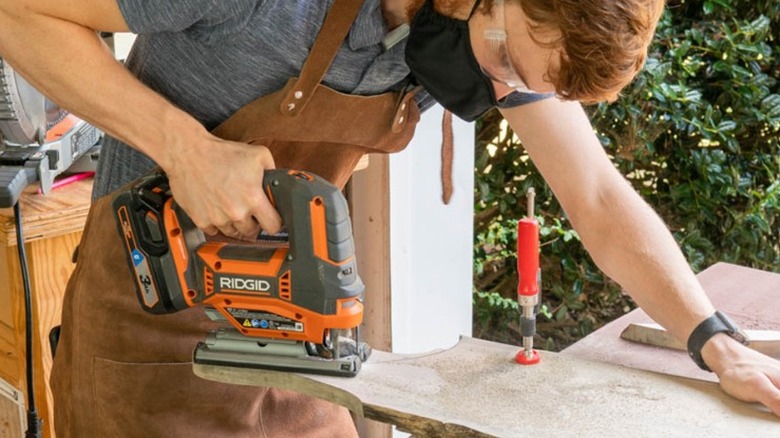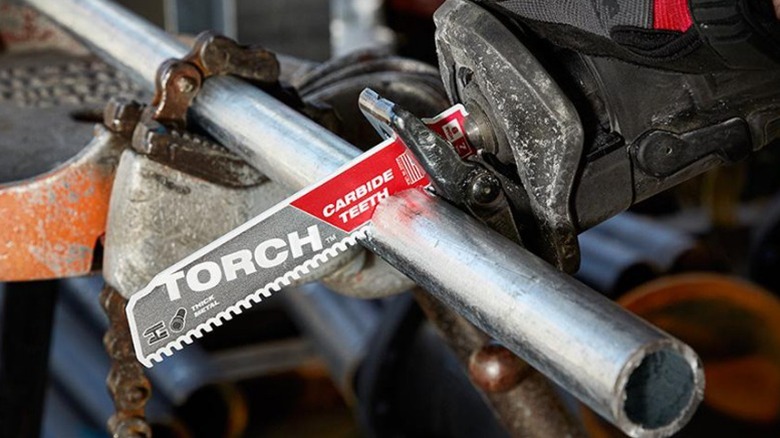 Home Depot
Home Depot
We may receive a commission on purchases made from links.
There are a lot of different kinds of power saws out there, and choosing the right one for the job can be a challenge if you aren't familiar with their strengths and weaknesses. It's easy to tell at a glance that the jigsaw and the reciprocating saw (AKA sawzall) are very different tools, but the mechanism behind what drives them is pretty similar. Just like how circular saws, table saws, and miter saws are all in a class of tools that use rotational power to spin circular blades, reciprocating saws and jigsaws are in a class that use straight blades with jagged teeth. The tool locks onto one end of one of these blades and then pushes and pulls it back and forth. This makes them much more similar to the classic hand saw than most other power saw varieties. That said, there are a lot of differences in the way you might use these tools for cutting wood and metal.
I've been building custom furniture for the better part of a decade, and I have plenty of experience using both of these tools. Both of them are technically capable of cutting both materials, but you'll find that choosing the tool that is better will often come down to the kind of cut you're looking to make. Is accuracy and dexterity of movement your priority, or do you require more speed and a longer cutting length?
Cutting wood
 Home Depot
Home Depot
When it comes to cutting wood, a jigsaw and a reciprocating saw can both be valid options, depending on what kind of project you're taking on. A jigsaw is definitely worth adding to your power tool collection if you do a lot of fine woodworking projects. It's designed for curved and otherwise intricate cuts that require accuracy and precision. A jigsaw is going to be the better option for shaping pieces of furniture, cutting out specific shapes, or trimming boards when the goal is to minimize tear-out and maintain precise measurements. Many of them will have a dial on the side that changes how much tension holds the blade straight. Tightening this makes the tool better for straight cuts, while loosening it can make it better for curved or wavy cuts. A jigsaw can also be a great tool for breaking down sheet goods if you don't have a circular saw or track saw available.
A reciprocating saw, on the other hand, is much more useful for fast, rough cuts. Most reciprocating saws from major brands are larger, though there are a few one-handed models out there. The saw blades that these tools use for wood tend to have wide, aggressively structured teeth. This makes it a saw of choice when it comes to demolition work, such as cutting through framing, joists, studs, decking, and fence posts. I've also found that it's good for certain landscaping work, such as cutting down tree limbs or removing thick roots.
Cutting metal
 Home Depot
Home Depot
Cutting metal is more nuanced because the type and thickness of the metal also enter into the equation. Jigsaws are able to cut metal when they have the right kind of blade. All of these are going to be straight, fine-toothed blades, but they aren't all the same. Some of them are more aggressive ones designed for thicker metals, while others have an even finer tooth pattern that's designed for a cleaner cut when dealing with thin or soft metal. With these blades, a jigsaw can be good for cutting sheet metal, aluminum, and thin metal pipes. Admittedly, this range of utility is quite limited, but there are some situations where it might come up. You can use a jigsaw to cut skirting for manufactured houses and sheds and flashing. I've also used mine to cut decorative sheet metal for grates when I was building an entertainment center and wanted to hide the cables and speakers in a compartment that still let sound travel through it.
The reciprocating saw, as you might expect, is able to cut harder and thicker metals much more aggressively, but with less accuracy. Steel pipes, rebar, lag bolts, hinges, and other denser and thicker metal fixtures can all be cut with this tool. Just like with wood, you shouldn't expect to receive the same level of precision as you would with a jigsaw, but it should be accurate enough that you can get reasonably clean lines when cutting things like metal piping. I've used mine to cut down old chain-link bars, and to sever fasteners that were too corroded to be removed. This kind of utility is likely going to come up a lot more frequently for demolition, construction, and major home renovation projects than shop-based metalwork.




